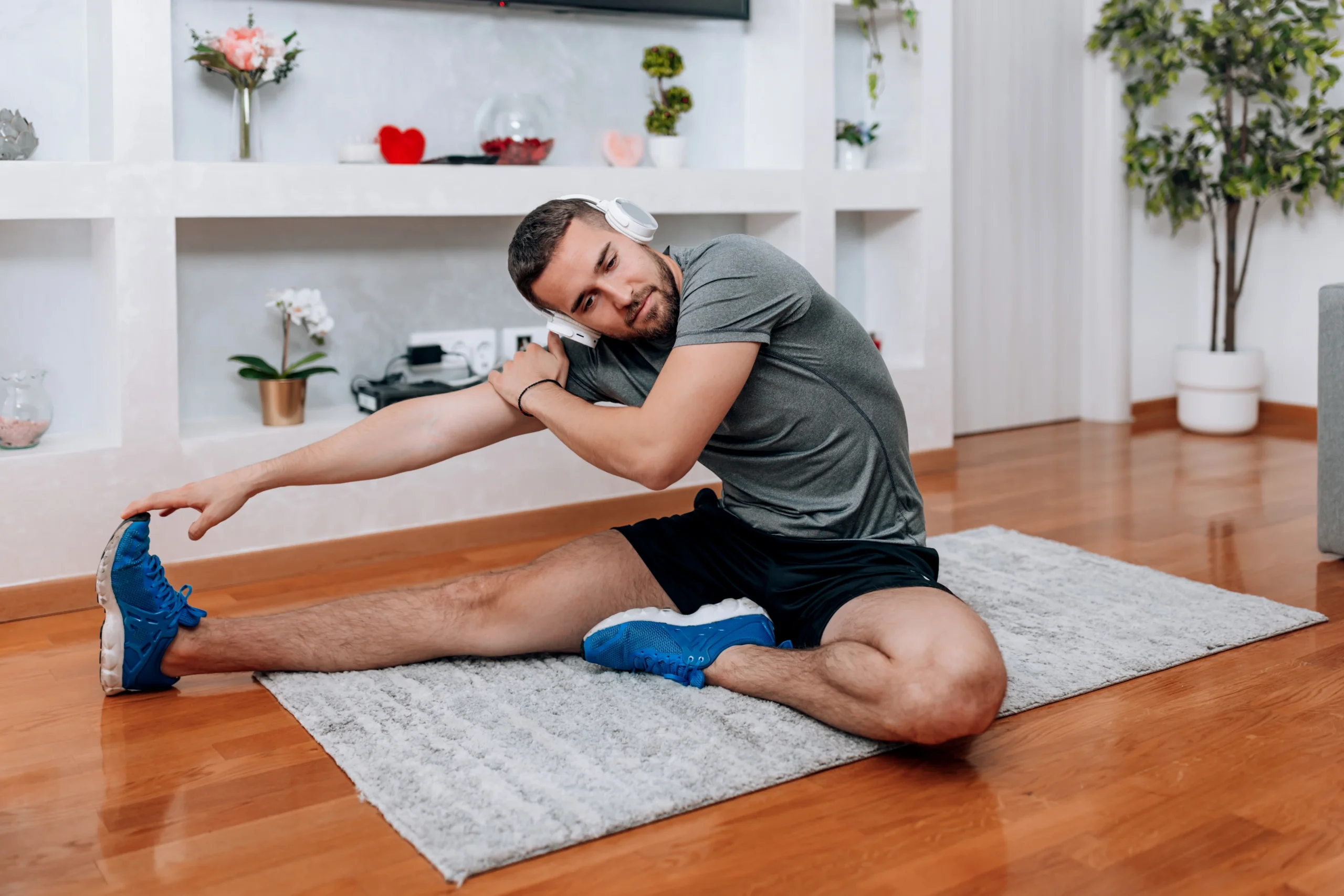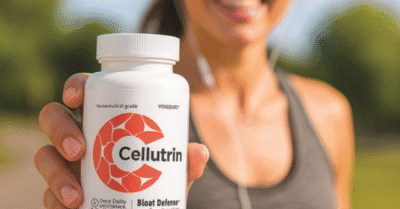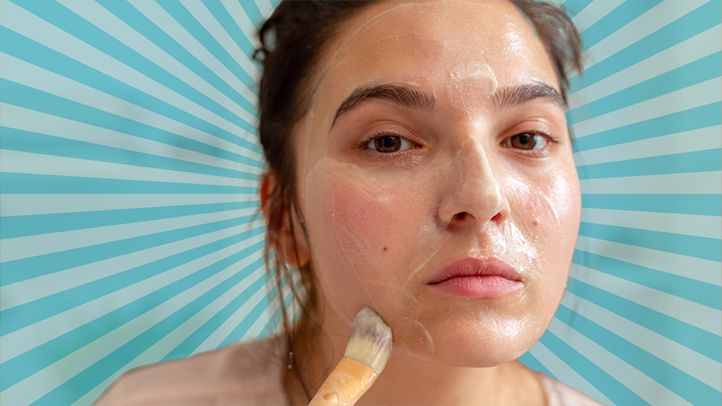Health & Fitness
apsang Souchong Unveiled: The Smoky Tea That Redefines Flavor

Introduction
Lapsang Souchong isn’t just a cup of tea; it’s an experience wrapped in deep, smoky aromas and bold flavors. Known as one of the world’s most distinctive black teas, Lapsang Souchong originates from the Wuyi Mountains in China’s Fujian Province. What sets this tea apart is its unique preparation process. The leaves are traditionally dried over pinewood fires, infusing each sip with a characteristic smoky essence that tea lovers either adore or shy away from.
This article unpacks everything about Lapsang Souchong, from its origins and health benefits to how best to brew and enjoy it. Whether you’re a tea enthusiast exploring new blends or a curious newcomer, this guide will walk you through this fascinating tea’s charm, inviting you to explore its rich history and robust profile.
What Is Lapsang Souchong?
Lapsang Souchong is a black tea known for its smoky flavor and aroma. Its name, derived from Mandarin Chinese, loosely translates to “small leaf variety from the high mountains.” True to its name, Lapsang Souchong leaves are grown in high-altitude regions, offering a clean yet bold flavor profile.
What Makes It Smoky?
The distinct smokiness comes from its unique drying process. After harvesting, tea leaves are traditionally smoked over burning pinewood fires. This ancient method not only preserves the leaves but also imbues them with layers of woody, campfire-like notes.
- Characteristics:
- Bold, smoky aroma resembling wood smoke.
- Full-bodied with earthy undertones.
- Balanced astringency with a naturally sweet aftertaste.
- Caffeine Content: Lapsang Souchong contains moderate caffeine, making it suitable for an energy boost without over-stimulation.
The Origins of Lapsang Souchong
Steeped in history, Lapsang Souchong originates in the Wuyi Mountains, a UNESCO World Heritage Site celebrated for its biodiversity and fertile soil. The region’s climate, altitude, and rocky terrain make it an ideal location for cultivating premium teas.
The tea’s smoky preparation process is believed to have emerged as a preservation method during wartime. Villagers dried leaves over fires to prevent them from spoiling during extended periods of strife. Over time, the smoky flavor became its trademark, leading to its recognition worldwide.
Beyond its origin story, Lapsang Souchong is deeply rooted in Chinese tea culture. It’s seen as both an everyday drink and a ceremonial brew, with its production passed down generations. Its distinct profile has also gained popularity globally as part of luxury tea blends and culinary recipes.
Health Benefits of Lapsang Souchong
Drinking Lapsang Souchong isn’t just flavorful; it may also boost your health. Similar to other black teas, it contains polyphenols and antioxidants that contribute to various wellness benefits.
- Improves Digestion: The astringent properties in black tea can aid digestion and soothe bloating.
- Supports Heart Health: Antioxidants help lower cholesterol and support circulatory health.
- Enhances Mental Alertness: Its moderate caffeine content provides a gentle energy boost.
- Promotes Relaxation: Smoky aromas can encourage mindfulness and relaxation, making it a calming ritual.
While Lapsang Souchong isn’t a “cure-all,” incorporating it into a balanced diet can bring a sense of wellness to both body and mind.
How to Brew the Perfect Cup of Lapsang Souchong
Getting the most out of Lapsang Souchong starts with brewing it correctly. Its bold flavors require careful preparation to avoid an overpowering taste.
Step-by-Step Brewing Guide
- Choose Quality Leaves: Opt for high-grade, loose leaves for the best flavor.
- Measure the Tea: Use 1 teaspoon of leaves per 8 ounces of water.
- Water Temperature: Heat water to approximately 200°F (just below boiling).
- Steeping Time: Steep the leaves for 3–5 minutes, tasting to adjust strength.
- Strain and Serve: Pour the brewed tea into your favorite cup and enjoy its robust aroma.
Serving Suggestions
- Add a splash of milk for a creamier texture.
- For sweetness, use honey, as it complements the smoky notes well.
- Pair with savory snacks like smoked salmon or cheese.
Culinary Uses of Lapsang Souchong
Did you know Lapsang Souchong goes beyond the teacup? Its intriguing smokiness makes it a fantastic ingredient in various culinary applications.
- Broths and Soups: Use brewed tea as a base for smoky broths.
- Marinades: Add a bold twist to meats by soaking them in tea-infused marinades.
- Cocktails: Incorporate it into cocktails like smoky old-fashioned or tea-infused martinis.
- Desserts: Infuse it into ice creams, chocolates, or baked goods for a surprising depth of flavor.
Its versatility ensures it adds a sophisticated flair to both savory and sweet dishes.
Lapsang Souchong vs Other Black Teas
While Lapsang Souchong shares qualities with other black teas, its smoky characteristic sets it apart.
- Assam: Bold and malty, but lacks smoky aromas.
- Darjeeling: Lighter and floral, suitable for afternoon tea.
- Keemun: Often compared for richness, but sweeter and less smoky.
Lapsang Souchong appeals to those who enjoy adventurous, complex flavors, making it a favorite among tea connoisseurs.
Where to Buy Authentic Lapsang Souchong
To enjoy true Lapsang Souchong, sourcing authentic, high-quality tea is crucial.
Best Buying Tips
- From Reputable Suppliers: Purchase from brands specializing in Chinese teas.
- Certification: Look for origin certifications to ensure authenticity.
- Price Point: High-quality options will typically cost more due to their meticulous production.
- Loose Leaves vs Bags: Loose leaves generally provide a richer experience compared to tea bags.
Online marketplaces, specialty tea shops, and Asian grocery stores are great starting points for tea enthusiasts exploring Lapsang Souchong.
The Global Appeal of Lapsang Souchong
Lapsang Souchong has a dedicated fanbase worldwide due to its distinctive smoky profile. It’s especially popular in the UK, US, and parts of Europe, often hailed as a refined choice for seasoned tea drinkers. Its global appeal proves that bold, unconventional flavors can transcend cultural boundaries, fostering appreciation for artisanal traditions.
FAQs About Lapsang Souchong
What is Lapsang Souchong?
Lapsang Souchong is a black tea from China, known for its smokiness due to being dried over pinewood fires.
Is Lapsang Souchong caffeinated?
Yes, it contains moderate caffeine, making it ideal for an energy boost without over-caffeination.
What does Lapsang Souchong taste like?
It has a robust, smoky flavor with earthy and slightly sweet undertones.
Can you add milk to Lapsang Souchong?
Yes, milk can complement its smoky intensity, creating a balanced, creamy cup.
Is Lapsang Souchong good for health?
Yes, it offers antioxidants and other health benefits like improved digestion and heart health.
How should I store Lapsang Souchong?
Store it in an airtight container away from light, heat, and moisture to preserve its quality.
Can I cook with Lapsang Souchong?
Absolutely! Use it in broths, marinades, and desserts for a smoky culinary twist.
Conclusion
Lapsang Souchong is more than just another tea; it’s a sensory experience rooted in history and embraced globally for its unique character. Its bold, smoky essence makes it a standout choice for tea lovers and culinary enthusiasts alike. Whether you enjoy sipping it traditionally or experimenting with it in recipes, Lapsang Souchong offers endless possibilities for exploration.
With its strong ties to tradition, wellness benefits, and versatility, there’s plenty to love about this fascinating tea. Why not brew a cup today and experience the world of Lapsang Souchong for yourself?
How Akcinė Bendrovė Empowers Global Entrepreneurs and Investors
Health & Fitness
Easy Stretches to Do Between Work Calls

You sit in the same chair every day from 9 AM to 6 PM, your back hurts, and your wrists ache from constant typing. You notice the pain, promise yourself: “I have to take exercise seriously this time.” But while looking at your calendar, which is filled with meetings with clients, you forget you had promised something to your health.
If this is what your average workday looks like, here are some stretches that are so simple that you can do them even between your work calls.
-
Seated Spinal Twist
When you sit at your desk for too long, your upper back muscles deserve the most attention. Start with a seated spinal twist to loosen the tight muscles in your spine and improve blood flow to your back.
How to do it:
- Sit in your office chair with both your feet on the floor.
- Place your right hand on the backrest of your chair and your left hand on your right thigh.
- Sit straight, lengthen your spine( as if you are trying to reach the ceiling with your torso), and breathe in.
- Then slowly twist your torso to the right, look over your shoulder, and breathe out.
- Breathe in, and repeat on the left side.
This stretch helps relieve tension in your lower back that builds up after you sit hunched over a laptop for many hours straight.
2. Wrist Flexor
Wrist Flexor is the best exercise you can do if your wrists hurt after constantly typing on the keyboard and working with the mouse.
How to do it:
- Stand with your back straight.
- Extend your right arm straight in front of you with your palm facing up.
- With your left hand, gently pull back the fingers of your right hand toward your body.
- Hold this position for 15–20 seconds while breathing slowly.
- Release and switch to the other arm.
This stretch lengthens the muscles on the underside of your forearm and reduces the strain that comes from using the mouse for a long time.
3. Eagle Arms Stretch
One of the most underrated ways to open up your shoulders is simply doing a quick Eagle Arms Stretch right at your desk.
How to do it:
- Stand straight and relax your shoulders.
- Extend your arms in front of you and cross your right arm over your left at the elbows.
- Bend your elbows in such a way that your forearms point upward and try to wrap your palms together.
- Lift your elbows slightly and reach your fingertips toward the ceiling while keeping your shoulders down.
- Hold the stretch for 15 seconds and repeat on the other side.
Many IT employees are enrolling in online yoga classes in Thane, where daily commuting is hard. Hence, the only way they can exercise is via an online community.
4. Seated Side Stretch
We often feel a tightness on either side of our waist while sitting in the same position for hours. Seated Side Stretch gently wakes up the muscles that become dull from sitting for so long.
How to do it:
- Sit in your chair and keep your spine straight.
- Place your right hand on the side of your chair for support.
- Raise your left arm overhead and gently reach to the right. You should feel a stretch along the left side of your torso.
- Hold for 15–20 seconds, breathing slowly.
- Return to your normal position and switch to the other side.
Besides doing these simple stretches at your desk, if you are also looking forward to join Free Yoga Sessions Online, then this is one of the earliest stretches most beginner sessions start with to relax the spine.
Join Yoga Class Online
If you’re looking for something more structured but calming, you can join an online yoga class, which is especially tailored for office-goers. These sessions teach you stretches, posture exercises, and breathing techniques so that you can deal with any situation at work without being overwhelmed.
Final Thoughts
Doing exercise in between long desk hours isn’t about chasing fitness goals. It’s about reconnecting with your body after it’s been numb under work stress for hours.
If you are not sure where to begin, there are many online yoga classes in Thane where you can simply log in during your coffee break and stretch your worries out!
Health & Fitness
The Science Behind Organic Skincare Solutions

In recent years, the beauty and wellness industry has witnessed a significant shift toward clean, ethical, and eco-conscious products. Among the most popular categories are vegan skincare products, which are not only free of animal-derived ingredients but also rooted in organic, plant-based formulations. While many people associate “organic” and “vegan” with wellness trends, there is solid science behind these skincare solutions that explains their growing popularity.
Understanding Vegan and Organic Skincare
Vegan skincare products exclude ingredients like beeswax, lanolin, collagen, and other substances derived from animals. Instead, they rely on plant-based oils, botanicals, and natural extracts. Organic skincare solutions take this a step further by ensuring that these ingredients are cultivated without pesticides, synthetic fertilizers, or harmful chemicals. Together, vegan and organic formulations support not only skin health but also environmental sustainability.
The science comes into play when we analyze how these ingredients interact with the skin. Unlike synthetic additives that may clog pores or trigger irritation, organic plant-based ingredients typically contain essential fatty acids, vitamins, and antioxidants that nourish the skin naturally.
The Role of Plant-Based Ingredients
Plants are powerhouses of bioactive compounds. For instance, aloe vera is rich in polysaccharides that hydrate and soothe the skin, while green tea contains polyphenols that act as potent antioxidants. Similarly, oils such as jojoba, argan, and rosehip are loaded with omega fatty acids, which strengthen the skin barrier and lock in moisture.
The absence of harsh chemicals in vegan skincare products allows these natural compounds to work more effectively. Research shows that many plant-derived ingredients mimic the skin’s natural lipids, making them more compatible with the skin’s physiology. This results in better absorption and long-lasting benefits without unnecessary irritation.
Antioxidants and Anti-Aging Benefits
One of the strongest scientific arguments for organic skincare lies in antioxidants. Free radicals—unstable molecules caused by pollution, UV rays, and stress—accelerate skin aging by damaging collagen and elastin. Vegan skincare products rich in antioxidants such as vitamin C, vitamin E, and resveratrol neutralize free radicals, reducing premature wrinkles and fine lines.
By using organic plant extracts, these antioxidants remain in their most potent form. For example, organic rosehip oil naturally delivers vitamin A in a gentle, non-synthetic way, encouraging cell turnover without the irritation often associated with retinoids.
Gentle on Sensitive Skin
Many people with sensitive or acne-prone skin turn to vegan skincare products because they are less likely to contain allergens or irritants commonly found in synthetic formulations. For example, artificial fragrances and preservatives in conventional products can trigger redness, itching, or breakouts. In contrast, organic essential oils and natural preservatives like rosemary extract are gentler alternatives that still protect the skin.
Clinical studies have also highlighted how plant-based formulations reduce the risk of contact dermatitis compared to chemical-heavy skincare solutions. This makes organic options especially valuable for those with eczema, rosacea, or other sensitive skin conditions.
Environmental and Ethical Benefits
Beyond personal skincare results, the science behind organic solutions also intersects with sustainability. Conventional cosmetics often rely on petrochemicals and non-biodegradable ingredients that harm ecosystems when washed down the drain. Vegan skincare products, however, typically use biodegradable formulas and eco-friendly packaging, reducing the overall environmental footprint.
Ethically, choosing vegan and organic products supports cruelty-free practices by eliminating animal testing and animal-derived ingredients. This aligns with a growing global demand for conscious consumption where beauty does not come at the expense of animals or the environment.
Why Science Supports the Switch
The science of skincare is clear: plant-based, organic compounds deliver proven benefits while minimizing risks associated with synthetic additives. From antioxidant protection and anti-aging support to hydration and barrier repair, vegan skincare products harness nature’s intelligence for healthier, more radiant skin.
Consumers are no longer satisfied with temporary cosmetic fixes; they want solutions that work with the body’s natural processes. Organic skincare provides that bridge—offering safe, effective, and sustainable options backed by both tradition and modern research.
Final Thoughts
The shift toward vegan skincare products isn’t just a passing trend—it is a science-backed movement. By embracing organic skincare solutions, individuals can enjoy the combined benefits of nourishment, protection, and sustainability. Ultimately, it’s about choosing products that care for the skin while respecting both nature and future generations.
Health & Fitness
Cellutrin | Local Woman’s Journey from Chronic Bloating | Cellutrin Review

Discover How Cellutrin Transformed One Teacher’s Life
TUCSON — For Maria Santos, a 38-year-old elementary school teacher, the constant battle with bloating had become more than just physical discomfort—it was affecting every aspect of her daily life.
“I’d wake up feeling okay, but by lunchtime, I looked like I was six months pregnant,” Santos recalls. “Standing in front of my classroom, trying to maintain energy while feeling so uncomfortable, was becoming impossible.”
The Breaking Point
After trying numerous approaches—from expensive probiotics to restrictive elimination diets—Santos was ready to accept that chronic bloating might just be her new normal.
“I spent hundreds of dollars on different supplements and special foods. Some helped temporarily, but nothing lasted,” she explains. “I was getting discouraged and frankly, exhausted from trying so many different things.”
A Recommendation That Changed Everything
A colleague mentioned Cellutrin Bloat Defense by Vitasource Health, describing her own success with the natural supplement.
“I was skeptical at first,” Santos admits. “But she explained how Cellutrin works differently—addressing the root causes instead of just covering up symptoms.”
She learned that Cellutrin combines metabolic activation, gut harmony, and peptide signaling to restore balance. Unlike quick-fix solutions, Cellutrin focuses on long-term support, which gave her confidence to try it.
Gradual but Lasting Changes
“The first week, I wasn’t sure if anything was happening,” Santos notes. “But by week two, I realized I wasn’t getting that uncomfortable swollen feeling after lunch anymore. That’s when I started to believe Cellutrin might actually deliver.”
The improvements continued:
- Week 3: Noticeable increase in afternoon energy, which she credits to Cellutrin’s metabolic effects
- Week 6: Down 7 pounds without changing eating habits—proof that Cellutrin weight support was real
- Week 10: Colleagues asking what she was doing differently; Santos shared her Cellutrin routine
- Week 12: Total weight loss of 13 pounds and sustained energy throughout school days, thanks to Cellutrin consistency
Back to Teaching with Confidence
“The biggest change isn’t even the weight loss, though that’s been wonderful,” Santos reflects. “It’s having consistent energy and feeling comfortable in my own body again. I can focus on my students instead of constantly thinking about how bloated I feel.”
Her renewed energy has extended beyond the classroom. “I’m actually excited about weekend activities again. I have the energy to enjoy life outside of work. Cellutrin gave me back that freedom.”
A Realistic Perspective
Santos emphasizes that Cellutrin isn’t a miracle cure. “I still eat reasonably well and try to stay active. But it addressed whatever was keeping my body stuck in that bloated, low-energy state.”
She also appreciates the company’s 60-day guarantee. “It took the pressure off. I could try Cellutrin without risk, knowing I’d get my money back if it didn’t work.”
When friends ask about her transformation, Santos tells them: “It’s not about perfection—it’s about finding something like Cellutrin support that helps your body finally reset.”
Advice for Others
“If you’re dealing with chronic bloating that’s affecting your quality of life, it might be worth addressing the underlying causes,” Santos suggests. “I wish I had discovered Cellutrin sooner instead of just accepting that this was how I was going to feel.”
She now recommends Cellutrin Bloat Defense openly to coworkers, family, and friends. “It’s rare to find something that lives up to its claims. Cellutrin actually did.”
About Cellutrin
Cellutrin is a natural supplement available exclusively through VitaSourceHealth.com and undergoes third-party testing for purity and potency. With thousands of customers reporting similar experiences, Cellutrin continues to build a reputation as one of the most trusted digestive and metabolic support supplements on the market.
Learn more about digestive health from Mayo Clinic’s bloating guide.
Health & Fitness
How to Keep Your Skin Clear in Armenia’s Summer Dust & Heat: The Acne Routine You Need

If your skin tends to break out in summer — even when you’re doing everything “right” — you’re not alone.
Living in Armenia during the hotter months brings a specific set of skin challenges:
- Dust in the air, especially in cities like Yerevan
- Intense sun
- Dry, windy weather
- Pollution and heat trapping sweat and sunscreen on your skin
Even if you don’t usually deal with acne, this combo can throw your skin off.
You might start noticing more clogged pores, heat bumps, or breakouts on your cheeks and forehead. You might also feel like your skin is oily and dehydrated at the same time (fun, right?).
The issue? Most acne advice isn’t built for this kind of climate.
We’re told to go for foaming cleansers, strong toners, and harsh spot treatments. But those usually strip the skin — which, in a dry climate like Armenia’s, can make acne worse in the long run.
What your skin actually needs: To stay clear (and calm) during the summer, your skin needs:
- Gentle cleansing (to wash off sweat, sunscreen, and pollution)
- Hydration (even if you’re oily!)
- Light protection from the sun and air
- Minimal products that don’t clog or irritate
That’s it. Let’s break it down.
1. Cleanser: Get the dirt off, but don’t strip
You want something that removes grime without leaving your face tight or squeaky.
Skip: harsh foaming washes, especially those with alcohol or fragrance
Instead: try a soft clay-based or gel cleanser — something that rinses clean, but keeps your skin barrier happy
You only need to wash your face twice a day — in the morning to remove sweat, and at night to clear off SPF and pollution. More than that, and you risk overdoing it.
2. Toner: Optional, but useful in a dry, dusty city
A good toner or hydrosol can help calm skin after cleansing and add a little extra hydration — especially if you’re feeling hot or flushed.
Look for alcohol-free, simple mists — like rose or cornflower water. Keep it in the fridge and use it to cool down during the day too.
3. Spot Treatment: Target, don’t blanket
Instead of putting acne treatments all over your face, focus them only where needed. That way, you’re not drying out healthy skin while trying to calm a few breakouts.
Plant-based spot treatments with things like tea tree, willow bark, or zinc work well. Dab it on, don’t rub.
4. Moisturizer: Even oily skin needs this
In Armenia’s dry heat, your skin might feel greasy — but that doesn’t mean it’s hydrated. In fact, dehydration often leads to more oil production.
What to use:
A lightweight, non-comedogenic cream or gel that sinks in fast. Aloe, calendula, or chamomile-based moisturizers are great. They soothe inflammation while giving your skin a moisture cushion to protect itself.
5. Sunscreen: Essential, even when it’s cloudy
UV exposure can make breakouts worse and darken post-acne marks.
A mineral sunscreen (zinc oxide is your friend) is less likely to clog pores and adds a bit of calm to irritated skin.
If your SPF feels heavy, try mixing a tiny amount with your moisturizer — or apply it in two thin layers, letting it sink in.
6. Bonus: Wash your face, not your barrier
More isn’t better. Don’t scrub every day. Don’t layer 5 actives. Your skin doesn’t need punishment — it needs support.
That includes:
- Not picking at your skin (easier said than done)
- Washing pillowcases regularly (dust builds up!)
- Taking breaks from makeup when possible
- Hydrating inside too — dehydration starts from within
A Note on the ABLOOM Acne Box (If You Want a Ready-Made Routine)
If you’re overwhelmed or just want someone to put it all together for you, the ABLOOM Acne Regimen Box, available online and in MoodMineral Yerevan store, includes the essentials — a gentle cleanser, balancing toner, anti-blemish serum, and a lightweight moisturizer.
But the routine itself? You can follow it using any well-formulated, calming products that suit your skin and the climate.
If you’re curious for more detail, this blog post dives deeper into how climate affects acne and highlights what to look for in skincare products to fight acne in Yerevan summers, especially when shopping locally.
Final Thoughts
Summer in Armenia brings dry winds, dust, and blazing sun — and all of it affects your skin. But clearing up acne doesn’t mean stripping your face raw or using harsh chemicals.
It means understanding what your skin is up against, and giving it the right kind of care: simple, consistent, and made for where you live.
Your skin wants to be in balance — your job is just to support it.
-

 Business & Finance6 days ago
Business & Finance6 days agoBartex.io Review: Discovering a Modern Trading Experience
-

 Lifestyle7 days ago
Lifestyle7 days agoWhat’s New in Food Jalbiteblog Trend Justalittlebite for 2025?
-

 Blog6 days ago
Blog6 days agoLevaQuant.com Review: A Comprehensive Perspective on Smarter Investing
-

 Blog6 days ago
Blog6 days agoDiscover Fintech Zoom.com: Real-Time Market Insights & Trends





